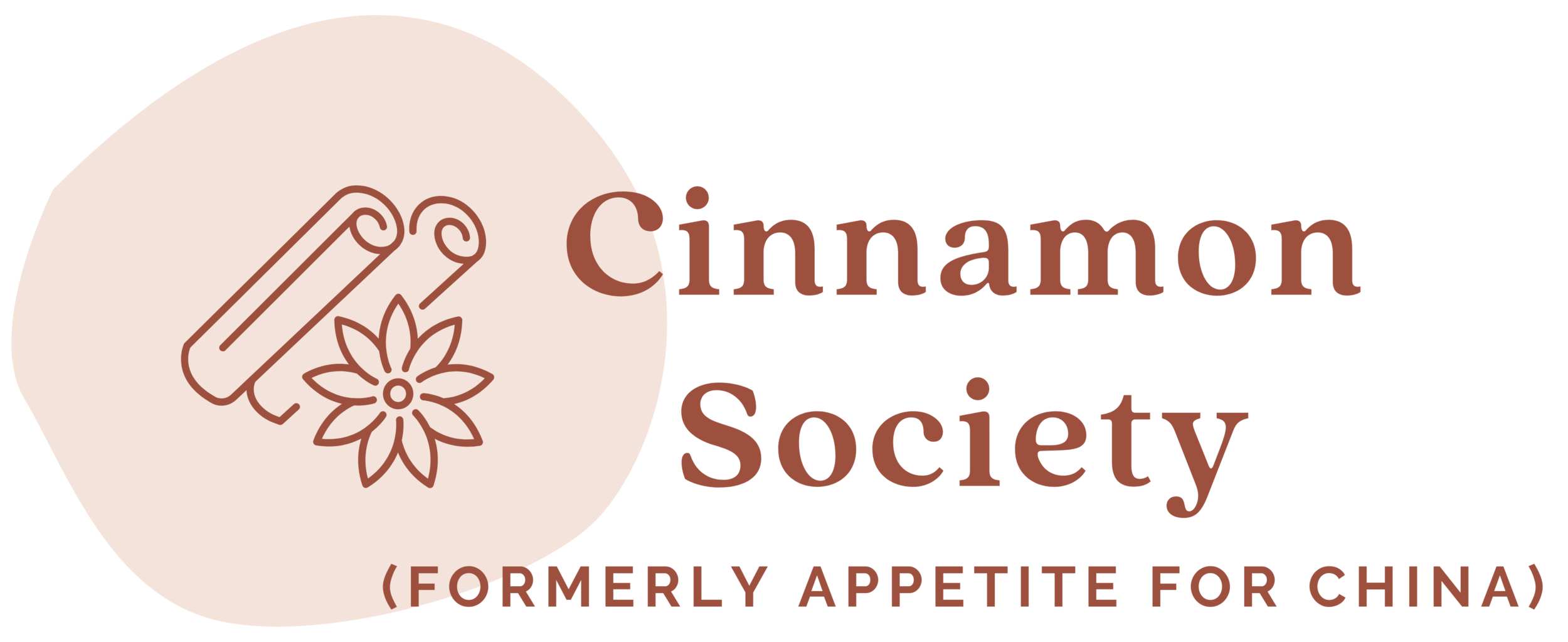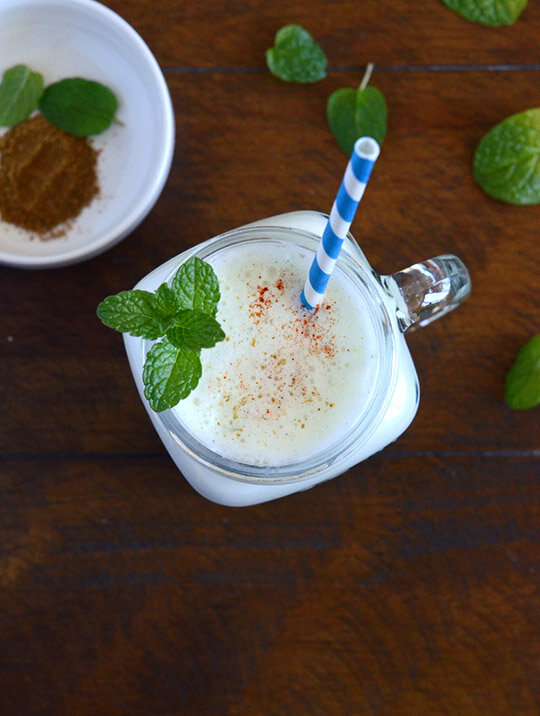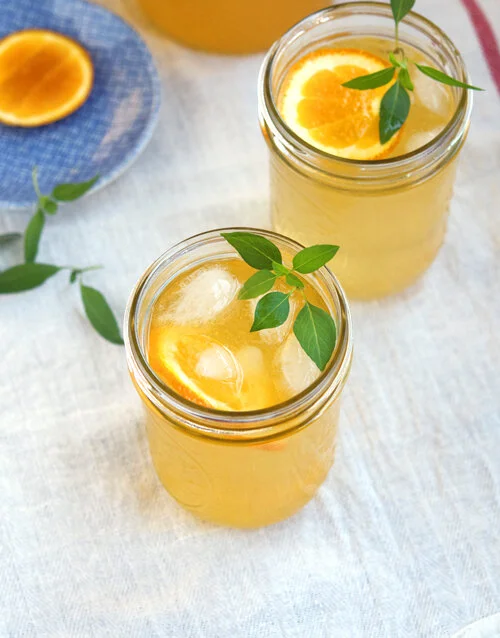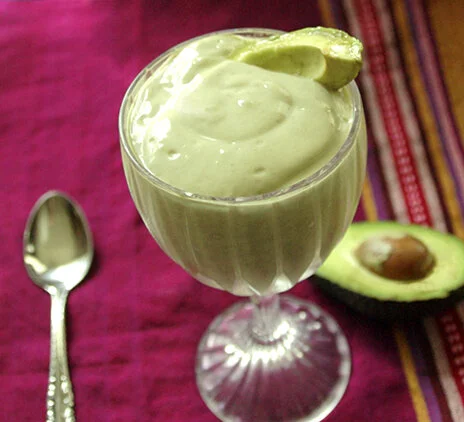A frothy latte you can make with matcha powder and either a cocktail shaker or a mini frother.
Read MoreSalted lassis are incredibly easy to make at home with a blender. And they’re surprisingly refreshing.
Read MoreI made an easier version of ginger milk tea that involves no frothing in the blender.
Read MoreI turn 30 tomorrow. It feels funny to say this. For the past month or so, I've been trying to shrug it off whenever someone mentions what a milestone birthday it's going to be. "Oh, um, it's just a number..." I say. "I'm sure it's not going to feel much different than 29." And it's partly true. I'm pretty certain I'm not going to wake up tomorrow with a head of gray hair, 25 extra pounds, and a sudden urge to shake my fist at all the young'uns playing music loudly in my neighborhood.
But I'm actually kind of excited to be exiting my 20s. Sure, there's always that feeling of "well, there goes another year...", compounded with "well, there goes another decade" for this particular birthday. But the later part of my 20s were pretty challenging, particularly the last year, and I'm happy to have moved beyond that.
I have quite a bit to be excited for. My book comes out this December. I have a new blog I'm eager to work more on. I'm collaborating with good friends on an exciting food-related venture. I have a brand new passport with blank pages just waiting to be stamped, as well as two old passports with reminders of all the places I've been.
Read MoreDo you realize how ridiculously delicious wine, brandy, citrus, and Thai basil taste together?
Read MoreHappy 4th of July weekend! I just wanted to put up a short post before the long weekend, to have something nice and refreshing for you to look at when you stop by. Plus, it seems as though we're all looking around food blogs for ideas for picnic- or barbecue-appropriate foods and drinks (I certainly am), so here is my contribution.
Somewhere in my parents' house is a photo of me, at age 2 in southern China, gnawing on a slice of watermelon bigger than my head. That I'm able to hold up this huge watermelon slice is pretty amazing. There is syrupy juice dripping down the side of my arms and, if you look closely, on the edge of my mouth too. Sitting next to me is my 3-year-old cousin, concentrating on his own watermelon slice, but seemingly edging away, as though I would steal his at any moment.
To say that we, as toddlers, had watermelon for dessert everyday in the summer is not an exaggeration. To escape the stuffiness of houses in the summer in Guangzhou, my cousin and I would bring our slices outside to courtyard and see how far we could spit our seeds. This, of course, attracted armies of ants, which our parents were not too happy about. We tried to remedy this problem by showering them with a watering can, but in hindsight, not spitting seeds on the ground at all would have been a better idea.
Read MoreI am sitting here writing this blog post in 100 degree (!!!) weather. The apartment I'm moving out of has no air conditioning, and all I have to prevent myself from melting is a fan and a hibiscus mojito. We hardly had a spring (at least here in New York), but summer came in full force!
A few years ago while living in China, mojitos became my de facto drink for cooling off during the muggy summers in Beijing and Shanghai. The main reason, other than the fact that mojitos are delicious, was that Bacardi rum seemed to be the only liquor that wasn't outrageously more expensive than it is in the U.S. Don't ask me why. When I traveled down south to Macau I could cool off with all the vinho verde I wanted, but up north in China, rum cocktails were the only good drinks I could have that didn't break the bank. So when I found a great gigantic tea market on the outskirts of Beijing, I bought hibiscus tea in bulk and made hibiscus mojitos every week.
Read MoreSo the holiday season is over, it's snowing for the 20th time this month, and the road to spring looks long and arduous. You want to be some place warm. Like Tahiti, or Oahu. But there's that cost thing. If only there were a place in New York where you could go and pretend to be in a tropical paradise. Some place with Mai Tai's and an occasionally overactive radiator, for example.
So read the beginning of the invitation for my Brooklyn tiki party. The end of January seemed like the perfect time to throw one, in conjunction with Foodbuzz's 24x24 event, wherein 24 bloggers around the world host food-themed events of their choosing on the same night. Tiki seemed like a natural choice; Chinese food plays a pretty big role in tiki culture as we know it in the US, and donning a lei and drinking tropical punches seemed like the perfect way to spend a winter's evening.
We no longer have a Trader Vic's in New York, but the city has seen some high-profile Polynesian-themed establishments open in the past year, including Lani Kai, The Hurricane Club, and Painkiller. Years ago, before the tiki revival trend, for a fun night out I used to go to Otto's Shrunken Head on East 14th, where you can get highly potent concoctions and listen to The Ventures cover bands. My current apartment, with its open kitchen layout, seemed like the perfect spot to recreate a tiki bar.
Read MoreThere are two types of people in this world: those who go through bubble tea withdrawal every few days, and those who vehemently hate the drink. The latter will shudder at the chewiness of the tapioca pearls, and complain about how drinks should not be "lumpy". I have a hard time understanding this textural phobia, but to each his own.
As for me, when in need of a cold drink and an afternoon snack, I like to kill two birds with one stone.
Or maybe three birds with one stone, if you need a cold drink, an afternoon snack, and a jolt of caffeine at the same time. Few caffeine sources taste better than cafe sua da, or iced Vietnamese coffee. While New York's early summer is not quite as oppresive as Hanoi's, it feels pretty close. So lately, I have been making Vietnamese coffee bubble "tea" to help with the humidity and afternoon slump.
Read MoreWhen I was living in China, the kitchen was never without rice. Long grain, short grain, jasmine, or brown, a sack or bulk bin bag would slouch in the corner, just waiting to be cooked. I would steam it, fry it, or boil it to a pulp for congee. And one day, out of severe homesickness, I decided to make horchata.
A Chinese friend was over and watched me pull a plastic carton from the fridge, which I had filled the day before with pulvertized rice grains and water to soak overnight.
"What is that?" she asked. I explained that Mexicans make a really nice icy drink out of rice water.
"But that's just like the leftover water from washing rice," she said."We dump that stuff down the drain."
"Um, true," I paused. "But when you add tons of sugar and vanilla and cinnamon, it's a great drink to go with your tacos."
"I'll stick with margaritas."
Read MoreIf a fruit grows in abundance in Vietnam, you can be sure it is pulsed into a shake. And avocados are everywhere.
Read MoreThe weather gods have been cruel to me. As some of you may know, I spent the last two weeks in New York and Boston; expecting normal late spring temperatures, I packed summer clothes and sandals, only to freeze the entire time. On the last day, as I rode the train to JFK for my flight out, the mercury shot up to 70s. Such is my luck as a traveler.
Of course, I returned to China, where the May forecast anywhere along the coast is best described as "sauna-like." As though on cue, my hair became as frizzy as tumbleweed. I blasted the fan and ransacked the fridge for anything cold and sugary.
No ice cream surfaced, but I did find a bottle of umeshu, Japanese plum wine, bought with brilliant foresight a few months ago. Now, I know the Japanese fruit ume is technically not the same as a Western plum, but "plum" is the closest possible English equivalent, and is the norm on most English menus I've seen. (A close second is "apricot".) Umeshu, made by fermenting the little green ume in shochu and adding a bit of rock sugar, has enough to sweetness to cut through the mild sour edge. I love that certain brands like Choya offer single or double serving pop-top bottles, with green plums floating inside.
Read MoreAt first glance, anyone who didn't grow up in an Asian culture might scrunch up her nose at herbal jelly. It's black, it's shiny, and it jiggles. But really, herbal jelly, or grass jelly, is like JELL-O, only naturally colored. Whole Foods is losing a big opportunity to market this as the next "it" health food.
Maybe it's the fact that it takes the shape of the tin can it comes from, that may turn people off. If, as a culture, Americans have moved past canned cranberry sauce, we might not be too thrilled with something similarly ridged but not candy-colored. Although grass jelly is made from an herb in the mint family, the taste is pretty neutral. Which is why Asians love it in desserts. In Hong Kong cafés and dessert shops serve grass jelly with mangoes, coconut, and other tropical produce. At bubble tea shops like Saint Alp's you can opt for little grass jelly bits instead of tapioca pearls.
In Hong Kong and southern China, you can find also tortoise jelly in tea shops with big gold or silver pots. Called gwei ling go in Cantonese, the genuine stuff is made from powdered tortoise shell and can get be as expensive as 300 HK dollars (about $38) for a rice bowl's worth. Don't worry, PETA members: imitation tortoise jelly is much more common and usually costs $1 or less. It's made from different herb than grass jelly, but tastes pretty much the same.
Read MoreWhenever I buy a new bottle of wine to try, I instinctively think "Okay, anything but Chinese for dinner." But really, why can't my favorite alcohol and (one of) my favorite cuisines just play nice? In China and many parts of Asia, the de-facto alcohols are rice wines, beer, and for the modern high-roller, whiskey. Drinking grape wine with Chinese food is much more complicated, because of the food's possible spices, smoked flavors, and sometimes pesky cilantro. Lately, however, the food media has been stepping up to the challenge.
Some brief insights:
Eric Asimov's recent column for The New York Times focuses on "Asian genres". Although most of the word count is devoted to Indian food, the same theories can apply to Chinese. "Sparkling wine often complements spicy food for the same reason that beer often works: the bubbles scrub and refresh the palate. Gewürztraminer is often recommended with spicy Asian cuisines, but I much prefer riesling, especially if it has some sweetness."
Read MoreOne of the reasons I love visiting Macau is for the inexpensive wine. Yes, the foodis wonderful, but wine is the only thing I get to tote back to mainland China and enjoy weeks (okay, days) later.
The former Portuguese colony used to have no import taxes on Portuguese wines. Even now the import taxes are so low that bottles of good Portuguese wines start at about 5 USD, much cheaper than French, Italian, even Chilean. (I have a tip on a bar that serves 75 cent glasses of reds and whites, and $1.25 glasses of port. I'll report back in a later entry.) According to a well-traveled local friend, Macau has the least expensive Ports anywhere in the world, including Portugal, since the wine producers want to keep the market in Asia open. True enough, it's common to see Hong Kongers and China-residing expats hauling home suitcases of Portuguese wine.
On this trip I decided to bring back white Port. Rather than drinking it as a dessert wine like red Port, you chill it and drink it as an aperatif. It's richer, more mouth-filling than a fino or amontillado sherry. (My Ramos Pinto dry white has a nice hint of peach.) Besides, on chilly winter evenings before dinner, you need something heavier in your belly to keep warm. Especially after a long day in front of the computer.
Read More



